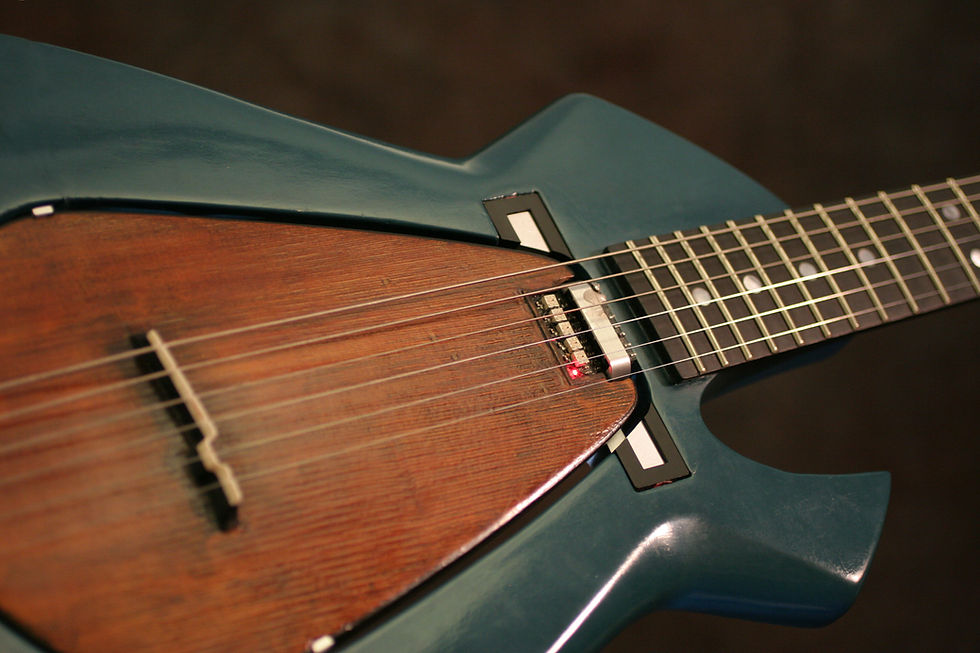The Chameleon Guitar: Wooden Heart in a Digital Instrument
- Amit Zoran
- 4 בינו׳ 2012
- זמן קריאה 1 דקות
עודכן: 12 במרץ 2024

With Pattie Maes, Joe Paradiso, Stephen Welch and William D. Hunt, 2009
Each acoustic instrument is one of a kind. Its unique acoustic properties are transferred from the physical characteristics of its source materials and a handcrafted touch. In contrast, electronic and computer-based instruments lack this distinguishing trait. Though the technology support in musical instruments offers great flexibility, it tends to foster predictable and generic results, particularly with common use of easily-cloned digital presets.
The Chameleon Guitar presents a new approach to the design and fabrication of instruments that combine the advantage of acoustic and electric instruments—hybrid instruments—that exist simultaneously in both physical and digital environments. This approach exploits physical/acoustic properties via a replaceable physical object complemented by a simulated shape or other digital signal manipulation. This work aims to demonstrate the possibility of maintaining the qualities found in real acoustic instruments, such as unique spectral and spatial behavior of wooden soundboards, with the flexibility of digital processing.
Research papers
Zoran, A., Welch, S., & Hunt, W.D. (2012). A platform for manipulation and examination of the acoustic guitar: The Chameleon Guitar. Applied Acoustics, 73, 338-347.
Zoran, Amit & Paradiso, Joseph. (2011). The Chameleon Guitar—Guitar with a Replaceable Resonator. Journal of New Music Research. 40. 59-74. 10.1080/09298215.2011.554609.
Resonators


























תגובות